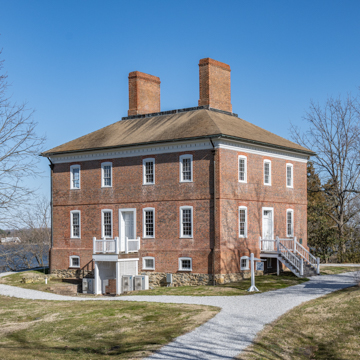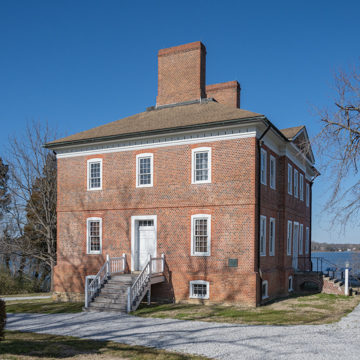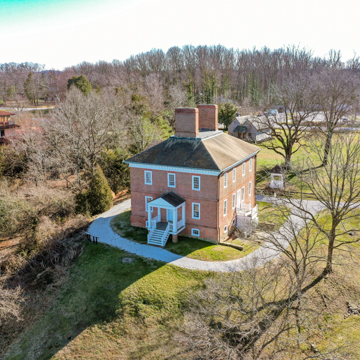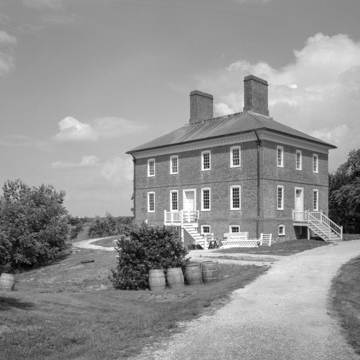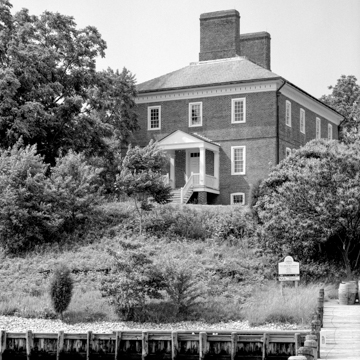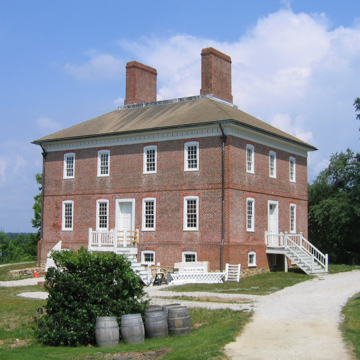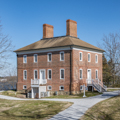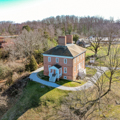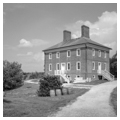This finely executed Georgian building is all that remains of the once-bustling colonial seaport of London Town, situated on the South River. Its orientation toward the former Scott Street reveals its prior urban context. It was erected as an upscale tavern by local builder, cabinetmaker, and innkeeper William Brown. As an indication of its quality, it is built entirely of header-bond brick, the only known building in the Chesapeake so constructed. The facades are ornamented by a water table and belt course, and a pair of large interior slab chimneys project from the central deck of a shallow-pitched hipped roof. The principal facade is signified by a central pavilion, while secondary entrances appear to the center of the other facades, with variations in the elaboration of the brick work revealing the hierarchy of their corresponding interior spaces. An idiosyncratic floor plan encompasses four corner rooms separated by a transverse passage and a central hall with a large public room to its rear. Anne Arundel County used it as an almshouse between 1828 and 1965. It then became part of a living history museum, surrounded by public gardens and replicas of colonial buildings.
References
Bourne, Michael, Orlando Ridout, V, Paul Touart, Donna Ware. Architecture and Change in the Chesapeake: A Field Tour and the Eastern and Western Shores. Crownsville, MD, and Newark, DE: Maryland Historical Trust and the Vernacular Architecture Forum, 1998.
Ware, Donna. Anne Arundel’s Legacy; The Historic Properties of Anne Arundel County. Annapolis, MD: Office of Planning and Zoning, Anne Arundel County, 1990.


